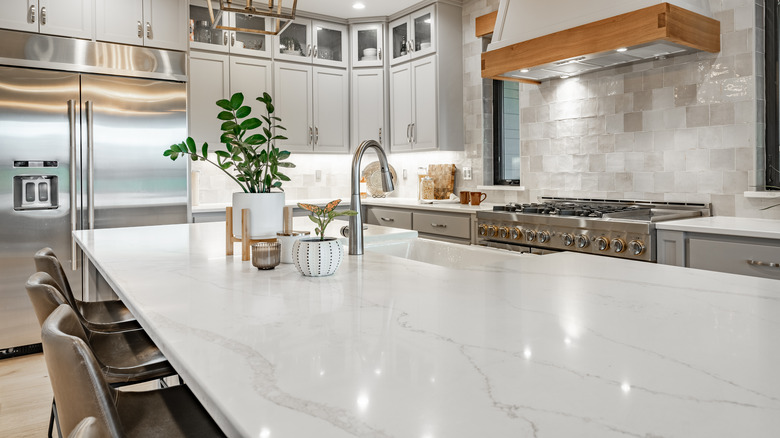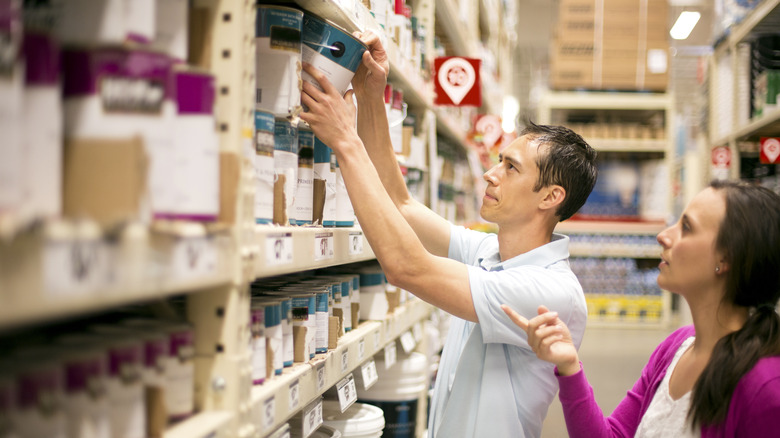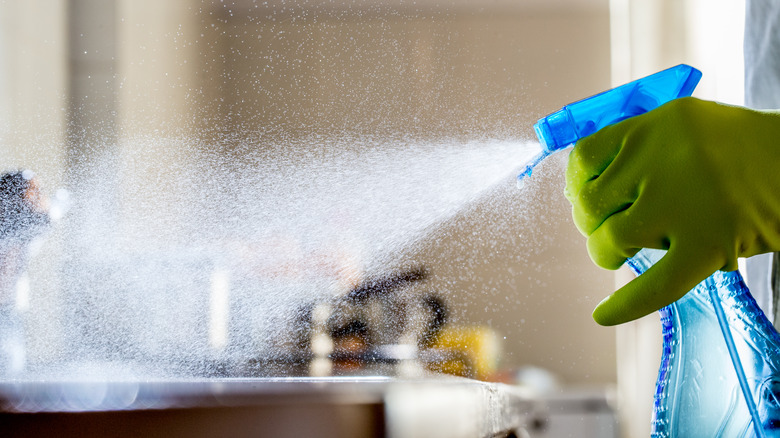How To Paint Concrete Countertops For A Fresh Look (And Common Mistakes To Avoid)
We may receive a commission on purchases made from links.
If your concrete countertops are starting to look a little dingy, you've gotten tired of the color, or you're thinking about giving the whole kitchen a new, fresh look, try paint! Painting your concrete countertops is a relatively inexpensive way to elevate your kitchen's vibe or incorporate color into your kitchen decor. And, thanks to concrete's durability, it's a pretty straightforward process.
First, use diamond grit sandpaper to sand your countertops lightly. Wet sanding may be a good choice to cut down on the dirt and dust. There will still be some cleanup, but not nearly as much. Next, wash the countertops with a concrete-safe cleaner, then prep for painting. Use drop cloths and painter's tape to keep the paint from getting on your floors, sink, or anywhere else you don't want it. From here, it's time to paint on your concrete primer. Check the directions on your primer to be sure, but most only need a single layer to be effective. Let dry completely. Once it's dry, apply your paint. If you're using a brush or roller, use mild pressure to keep it smooth. If you're spray painting, paint a small section at a time so you don't overload the surface with paint and cause drips. Let everything dry and apply another coat (or two) as needed. Once dry, finish everything off with a food-grade sealant.
How to pick the right paint for your concrete countertops
Picking the right concrete color application to give your countertops an upgrade depends on what look you're going for. If you want a solid, opaque color, concrete paint is the best option. Apply it in 2 or 3 thin layers with a roller brush for the best effect. Want to make your countertops look like marble or another natural stone? Thanks to its glasslike effect, epoxy paint is a good choice. Luckily, there are kits to make this process easier to achieve the marbling effect, like the Giani Marble Easy Epoxy Countertop Paint Kit.
Or, if you like your countertop's texture but just want to add a little color, try a concrete stain or dye. Stains are a semi-transparent color that give you more creative flexibility but tend to be messier, while dyes are more permanent, making the countertop color hard to change after application. If you have outdoor concrete countertops, skip the dye. Dyes aren't UV stable, meaning it may fade or become patchy after exposure to sunlight.
Common mistakes to avoid when prepping and painting concrete countertops
When you're prepping your concrete countertops, it's tempting to use an abrasive or acidic cleaner to make sure the surface is scrubbed clean beforehand so the paint goes down smooth. However, there are some cleaning ingredients you should avoid using on concrete countertops at all costs. Instead, lean into a gentle cleaner — like a mixture of dish soap and water, or concrete-specific cleaner like the Better Life Granite Cleaner and Polish — to make sure the surface is spic-n-span before starting.
Speaking of protecting your countertops, make sure to apply a food-grade sealant after the color has set in. It's tempting to let the color dry and just go on with your day, but many concrete paints, stains, and dyes are not food grade, meaning it may not be safe to prepare food on the countertops until they are properly sealed. Plus, the sealant will protect your counters from hard-to-remove stains, helping to ensure they look brand new, even with regular wear and tear.


